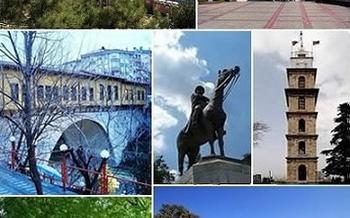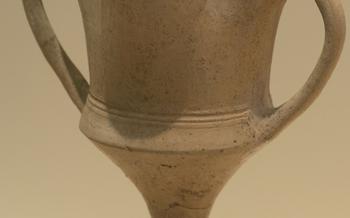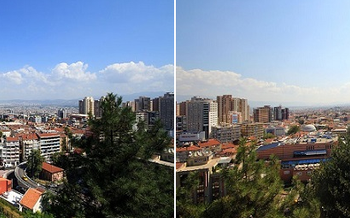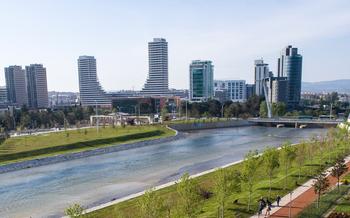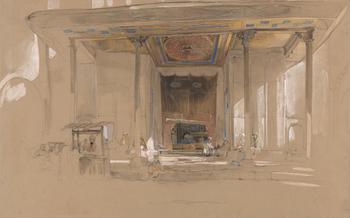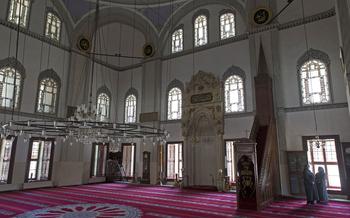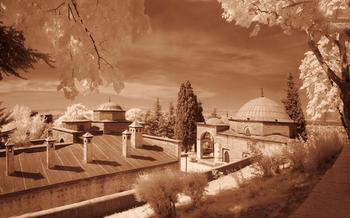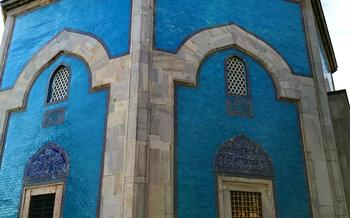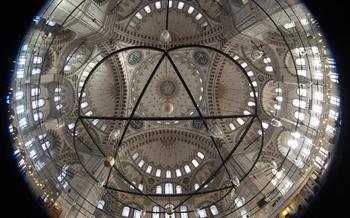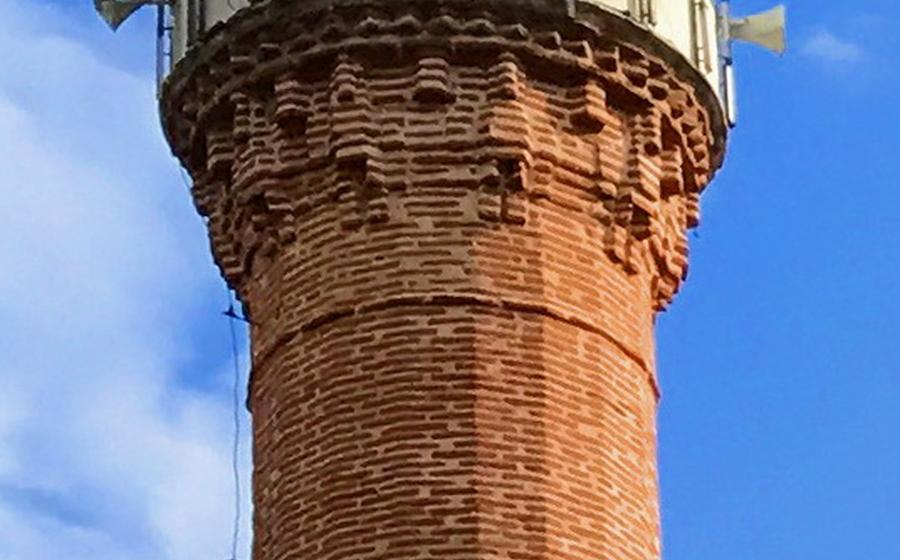
Green Mosque (Yeşil Camii)
- The Green Mosque in Bursa
- History of the Green Mosque
- Architectural Details of the Green Mosque
- Interior Design of the Green Mosque
- Meaning of Green in Islamic Architecture
- Religious Significance of the Green Mosque
- Visiting the Green Mosque
- Exploring the Green Mosque Complex
- The Green Mosque in Bursa, Turkey
- The Green Mosque: A Masterpiece of Iznik Tilework
- Exploring Bursa, Turkey
- The Green Mosque: A Must-See in Bursa
- The Green Mosque: A Timeless Wonder
- The Green Mosque: A Place of Serenity
- Insider Tip: Unveiling the Green Mosque's Secrets
The Green Mosque in Bursa
The Green Mosque (Yeşil Camii) in Bursa, Turkey, is a stunning architectural masterpiece that stands as a testament to the city's rich history and cultural heritage. Built in the 15th century during the reign of Sultan Mehmed I, the mosque is renowned for its exquisite Iznik tilework, intricate calligraphy, and impressive architectural design. It is considered one of the finest examples of Ottoman architecture and a symbol of Bursa's Islamic faith and devotion.
The Green Mosque derives its name from the vibrant green tiles that adorn its interior and exterior, creating a mesmerizing visual spectacle. These tiles, produced in the nearby town of Iznik, depict intricate geometric patterns, floral motifs, and verses from the Quran. The mosque's architectural style blends traditional Islamic elements with Byzantine influences, showcasing the cultural diversity of the Ottoman Empire. Its graceful domes, slender minarets, and spacious courtyard contribute to its overall aesthetic appeal and grandeur.
History of the Green Mosque
The Green Mosque, a testament to the grandeur of the Ottoman Empire, was commissioned by Sultan Mehmed I, the fourth ruler of the dynasty. Its construction, initiated in 1419, was entrusted to the skilled hands of Hacı Ivaz Pasha, a prominent figure in the sultan's court. The mosque's meticulous design and intricate tilework reflect the sultan's desire to create a masterpiece that would rival the architectural marvels of his predecessors and leave an indelible mark on the Islamic world.
Under Pasha's supervision, a team of talented architects, artisans, and craftsmen meticulously worked to bring the sultan's vision to life. The mosque's construction, a labor of love and devotion, spanned several years, with the final masterpiece unveiled in 142The Green Mosque, with its stunning beauty and intricate details, quickly became a symbol of Bursa's growing prominence as a center of Islamic learning and culture.
Architectural Details of the Green Mosque
The Green Mosque stands out for its meticulous architectural detailing and lavish ornamentation. Its interior and exterior are adorned with exquisite Iznik tiles and intricate calligraphy, showcasing the artistry and craftsmanship of the Ottoman era. The mosque's walls and domes are resplendent with intricate floral patterns, geometric designs, and verses from the Quran. The Iznik tiles, renowned for their vibrant colors and intricate designs, create a mesmerizing effect. The mosque's interior is dominated by a magnificent mihrab, the niche indicating the direction of Mecca. The mihrab is adorned with exceptional tilework and calligraphy, creating a focal point that draws the eye. The mosque's minarets are slender and elegant, adorned with intricate tilework and topped with conical roofs. The domes, with their graceful curves, echo the minarets' design and add to the mosque's overall harmony and grandeur.
Interior Design of the Green Mosque
The interior of the Green Mosque is a testament to the exquisite craftsmanship and artistry of the Ottoman era. The prayer hall, the heart of the mosque, is a vast and awe-inspiring space, adorned with intricate tilework, calligraphy, and decorative arts.
The mihrab, the niche indicating the direction of Mecca, is the focal point of the prayer hall. It is adorned with exquisite Iznik tiles, featuring vibrant colors and intricate geometric patterns. The tiles depict scenes from the Quran, such as the Night Journey of the Prophet Muhammad, adding a spiritual dimension to the space.
The minarets, slender and graceful, rise high above the mosque, symbolizing the connection between heaven and earth. They are adorned with intricate tilework and calligraphy, creating a visually stunning effect.
The domes, majestic and imposing, add to the grandeur of the mosque. They are covered in lead and decorated with intricate patterns, creating a harmonious balance between form and function.
Meaning of Green in Islamic Architecture
In Islamic architecture, the color green holds deep symbolism and significance. It represents several spiritual and cultural meanings that transcend its mere aesthetic appeal.
-
Symbolism and Significance: Green is often associated with paradise, fertility, and the abundance of nature in Islamic culture. It symbolizes the lush gardens of Jannah (heaven) described in the Quran and represents the blessings and rewards bestowed upon the faithful.
-
Use of Green in Other Mosques: The use of green in Islamic architecture is not limited to the Green Mosque in Bursa. Several other notable mosques worldwide incorporate this color to convey similar meanings. The Prophet's Mosque in Medina, for example, features green-tiled domes, representing the gardens of paradise.
-
Cultural and Religious Context: The color green also holds cultural and religious significance in Islam. It is often associated with the Prophet Muhammad, who is often depicted wearing a green turban or cloak. Green is also believed to be the color of the Prophet's horse, Buraq, which transported him during his miraculous Night Journey (Isra and Mi'raj).
Religious Significance of the Green Mosque
The Green Mosque stands as a testament to Bursa's profound Islamic heritage and its enduring role as a center of Islamic scholarship and devotion. It embodies the Ottoman dynasty's commitment to religious patronage and their deep reverence for Islamic traditions.
The mosque's construction during the reign of Mehmed I, a pivotal figure in Ottoman history, underscores its significance as a symbol of Ottoman power and piety. Mehmed I, who conquered Bursa from the Byzantines and made it the first capital of the Ottoman Empire, commissioned the mosque as a reflection of his unwavering faith and as a symbol of his commitment to the welfare of his Muslim subjects.
Throughout its history, the Green Mosque has served as a vibrant hub for religious activities, hosting daily prayers, Friday congregational prayers, and special religious observances during holy months and festivals. Its spacious prayer hall, adorned with intricate tilework and calligraphy, has provided a sacred space for generations of Muslims to gather, worship, and seek spiritual guidance.
The Green Mosque's enduring significance lies in its embodiment of the deep connection between the Ottoman dynasty and the Islamic faith. It stands as a symbol of Islamic devotion, a testament to the power of faith in shaping the cultural and architectural landscape of Bursa, and a reminder of the city's rich Islamic heritage.
Visiting the Green Mosque
Tourist information and accessibility The Green Mosque is open to visitors daily during daylight hours. It is easily accessible by public transportation or taxi. Guided tours are available upon request, offering insights into the mosque's history, architecture, and religious significance.
Dress code and customs As with all mosques in Turkey, visitors to the Green Mosque are expected to dress modestly. Women should cover their heads with a headscarf or shawl, and both men and women should wear loose-fitting, non-revealing clothing. Upon entering the mosque, visitors are required to remove their shoes and leave them in the designated shoe racks.
Photography and etiquette Photography is generally allowed inside the Green Mosque, but visitors are kindly requested to be respectful of the worshippers and avoid using flash or excessive noise. It is important to remember that the mosque is an active place of worship, and visitors should behave in a respectful and considerate manner.
Exploring the Green Mosque Complex
The Green Mosque stands as the centerpiece of a sprawling complex that encapsulates the essence of Bursa's Islamic heritage. Surrounding the mosque is a tranquil courtyard, where visitors can find respite from the bustling city streets. Within the complex, several tombs and mausoleums pay homage to prominent figures of the Ottoman era. These structures, adorned with intricate carvings and calligraphy, serve as a testament to the artistic prowess of the period.
Among the notable tombs within the complex is that of Sultan Mehmed I, the founder of the Ottoman dynasty. His final resting place exudes an aura of reverence, with its ornate decorations and inscriptions that speak of his legacy. Other tombs and mausoleums in the complex belong to members of the Ottoman royal family, high-ranking officials, and religious scholars.
Exploring the Green Mosque complex offers a glimpse into the rich history and cultural heritage of Bursa. Each structure within the complex tells a story of faith, devotion, and architectural mastery, contributing to the enduring significance of this sacred site.
The Green Mosque in Bursa, Turkey
Location and how to get there
Bursa is easily accessible by road, rail, or air. The Green Mosque is conveniently located in the heart of the city, within walking distance from other historical landmarks. Visitors can take a leisurely stroll through the vibrant streets of Bursa, admiring the Ottoman architecture and bustling atmosphere.
Nearby attractions and sightseeing
In addition to the Green Mosque, Bursa offers a wealth of attractions for history buffs and culture enthusiasts. Visitors can explore the Bursa Castle, a 14th-century marvel that offers panoramic city views. The city also boasts several museums, including the Bursa Museum of Archaeology and Ethnography, which showcases the region's rich history and traditions.
Bursa's rich cultural and historical heritage
Bursa, once the capital of the Ottoman Empire, is a treasure trove of cultural and historical heritage. The city's streets are lined with historic buildings, mosques, and markets, each telling a story of Bursa's glorious past. Visitors can indulge in traditional Turkish cuisine, visit local artisans' workshops, and experience the vibrant atmosphere of one of Turkey's most dynamic cities.
The Green Mosque: A Masterpiece of Iznik Tilework
The Green Mosque is renowned for its stunning Iznik tilework, considered one of the finest examples of this intricate art form. The walls of the mosque are adorned with vibrant and colorful tiles, creating a mesmerizing and awe-inspiring interior.
The tiles feature intricate geometric and floral motifs, each meticulously hand-painted and arranged in harmonious patterns. The vibrant blues, greens, and reds of the tiles contrast beautifully with the white marble walls, creating a captivating visual spectacle.
The Green Mosque's tilework is not only aesthetically pleasing but also holds significant historical and cultural value. Iznik tiles were highly prized in the Ottoman Empire and were often used to decorate important religious and secular buildings. The tiles produced in Iznik were renowned for their high quality, intricate designs, and vibrant colors.
In the Green Mosque, the tilework serves not only as decoration but also as a testament to the skill and artistry of the Ottoman craftsmen. The intricate patterns and vibrant colors of the tiles create a unique and immersive experience for visitors, transporting them back in time to the height of the Ottoman Empire.
Exploring Bursa, Turkey
Beyond the Green Mosque
Bursa offers a wealth of historical and cultural treasures beyond the Green Mosque. Explore the bustling Grand Bazaar, a vibrant market where you can haggle for souvenirs, spices, and local delicacies. Visit the Bursa Archaeological Museum to learn about the region's rich past, from ancient civilizations to the Ottoman Empire.
Stroll along the picturesque Cumalıkızık Village, a well-preserved Ottoman-era neighborhood with cobblestone streets and traditional houses. Admire the grandeur of the Bursa Ulu Cami, another architectural marvel known for its stunning dome and intricate tilework.
Immerse yourself in Bursa's vibrant culinary scene by sampling local specialties like İskender kebab, a mouthwatering dish of thinly sliced meat served over pita bread with tomato sauce and yogurt. Don't miss the opportunity to taste the famous Bursa chestnuts, known for their sweet and nutty flavor.
Take a leisurely boat trip on Lake Ulubat, a serene natural reserve teeming with wildlife, including the majestic white stork. As the sun sets, witness the mesmerizing view of Uludağ Mountain, a popular destination for skiing and nature enthusiasts.
With its rich history, stunning architecture, and natural beauty, Bursa has something to offer every traveler. Discover the hidden gems of this charming city and experience the warmth and hospitality of its people.
The Green Mosque: A Must-See in Bursa
The Green Mosque stands as a testament to the remarkable architectural achievements of the Ottoman Empire. Its unique design, intricate tilework, and historical significance make it a must-see attraction for any visitor to Bursa. As you step inside the mosque, you will be awestruck by the sheer beauty and grandeur of its interior. The Iznik tiles that adorn the walls and mihrab are a testament to the exquisite craftsmanship of the Ottoman artisans. The intricate geometric and floral patterns, combined with the vibrant colors, create a breathtaking visual display.
The mosque's minarets, with their elegant proportions and distinctive green tiles, are another striking feature. They rise majestically towards the sky, symbolizing the mosque's importance as a center of Islamic faith and devotion. The domes, with their graceful curves and intricate designs, add to the mosque's overall grandeur, making it a true architectural masterpiece.
The Green Mosque: A Timeless Wonder
The Green Mosque stands as a testament to the enduring legacy and significance of Ottoman architecture. Its intricate design and stunning tilework have ensured its place as a timeless wonder, admired by visitors from around the world.
Beyond its architectural beauty, the Green Mosque holds deep spiritual significance. It represents the power of faith, a testament to the devotion of the Ottoman sultans who commissioned its construction. The mosque's harmonious design and serene atmosphere create a sanctuary for reflection and contemplation, a place where visitors can find peace and tranquility amidst the bustling city.
The Green Mosque serves as a reminder of the rich cultural heritage of Bursa and the Ottoman Empire. It is a living symbol of the city's Islamic identity and a testament to the enduring power of faith. Visitors to Bursa are sure to be captivated by the mosque's timeless beauty and its ability to transport them back in time to a world of architectural splendor and spiritual devotion.
The Green Mosque: A Place of Serenity
The Green Mosque in Bursa is not just a remarkable architectural wonder; it is also a place of profound serenity and spiritual aura. Stepping into the mosque's tranquil courtyard, visitors are enveloped in a sense of peace and tranquility. The gentle sound of birdsong, the rustling of leaves in the breeze, and the distant call to prayer create a harmonious symphony that soothes the soul.
Within the mosque's prayer hall, a sense of awe and reverence permeates the air. The soft, diffused light filtering through the stained-glass windows casts a warm glow upon the intricate tilework and calligraphy that adorn the walls. The high-domed ceiling, supported by slender columns, creates a sense of vastness and grandeur that invites contemplation and reflection.
Muslims and non-Muslims alike find solace and inspiration within the Green Mosque. It is a place where one can come to seek guidance, pray for forgiveness, or simply find a moment of peace amidst the bustling city. The mosque's serene atmosphere invites visitors to slow down, connect with their inner selves, and experience a sense of tranquility that transcends the boundaries of religion and culture.
Whether you are a devout Muslim seeking spiritual fulfillment or a traveler looking for a place of respite, the Green Mosque in Bursa offers a sanctuary for the soul. It is a place where one can come to find peace, contemplate life's mysteries, and connect with the divine.
Insider Tip: Unveiling the Green Mosque's Secrets
To fully appreciate the tranquility and beauty of the Green Mosque, plan your visit during the early morning or late afternoon, when the crowds are fewer. This will allow you to immerse yourself in the serene atmosphere and truly connect with the mosque's spiritual essence.
While visiting the mosque, remember to respect local customs and traditions. Dress modestly, covering your shoulders and knees, and remove your shoes before entering the prayer hall. Photography is permitted, but be mindful of other visitors and avoid using flash.
After your visit to the mosque, take some time to explore the surrounding area. Bursa is renowned for its delicious cuisine, so be sure to savor some local delicacies at one of the nearby restaurants. For a refreshing break, indulge in a cup of traditional Turkish coffee or tea at one of the charming cafes.
Your visit to the Green Mosque and Bursa will be an unforgettable experience, leaving you with a deep appreciation for the city's rich history, culture, and Islamic heritage.
